Australia is home to a fascinating diversity of unique animals and birds. One of the most intriguing is the emu.
My only real interest in the emu was when I played rugby for the Orange Emus in my younger years. It wasn’t until I travelled around the country that the emu became part of my consciousness. This flightless bird is truly remarkable and has played an enduring role in our landscape.
Emus are the second largest bird in the world, after ostriches, standing up to 190 centimetres tall. They belong to a group of flightless birds which includes cassowaries and ostriches. Because they lack a breastbone, they have no anchor for flight muscles. Instead, they have tiny vestigial (having become functionless) wings. They flap their tiny wings when they run to keep their balance.
Emu feathers are interesting and unique. Most birds have outer feathers with a single shaft, interconnected with tiny hooks knitting them together into a smooth, aerodynamic cover over their body. Emus, on the other hand, have two shafts. They lack the small hooks that bind them together and hang loosely, giving the body a shaggy appearance. If you run your hand along the emu’s feathers, it feels like the softly worn bristles of an old paintbrush.
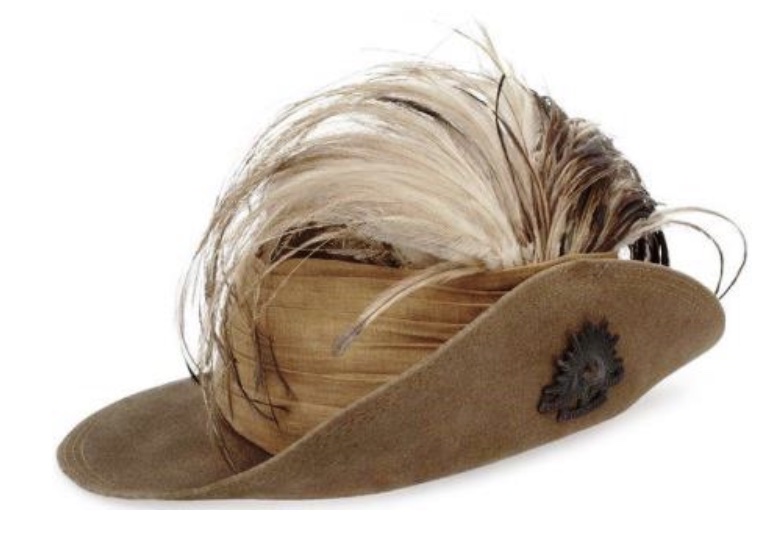
Australian cavalry units carried emu feather plumes on their dress uniform hats. During WW1, it was permitted that all units of the Australian Light Horse could decorate their slouch hats with a plume of emu feathers. And did you know that two of the world’s famous European car manufacturers, Audi and BMW, use emu feathers as dusters to wipe their vehicles before and after painting them? The latter sources their feathers from emu farms in Bavaria, Germany.
(Left) The slouch hat with emu feathers.
While emus may not be able to fly, they sure can run, reaching speeds of 50 kilometres per hour and a running stride of three metres. Instead of four toes like most birds, emus only have three thick pads under their feet to help them travel long distances.
They are only found in Australia and used to be in Tasmania but were exterminated not long after European settlement. There were two dwarf emu species on Kangaroo and King Islands, but they are no more. These days, emus inhabit the less populated parts of the continent, thriving in most environments. However, pastoral development with associated dams and even irrigation projects have led emus to enter areas they once avoided for lack of water. Generally, they migrate annually, spending summer in Northern Australia and winter in Southern Australia.
Their breeding cycle is intriguing. After helping prepare a ground nest, the female lays 5 to 15 sizeable dark aqua eggs, then leaves the nest to the male. The male incubates the eggs for about 55 days. In that time, he doesn’t eat, drink or poo, rarely leaves the nest and not surprisingly loses about 8 kilograms in weight.
After hatching, the male rears the young emus defending them and teaching them how to find food. The chicks start reproducing after 18 months and live for up to ten years.
(Right) A nest of emu eggs. Photo Kurt Tschirner.
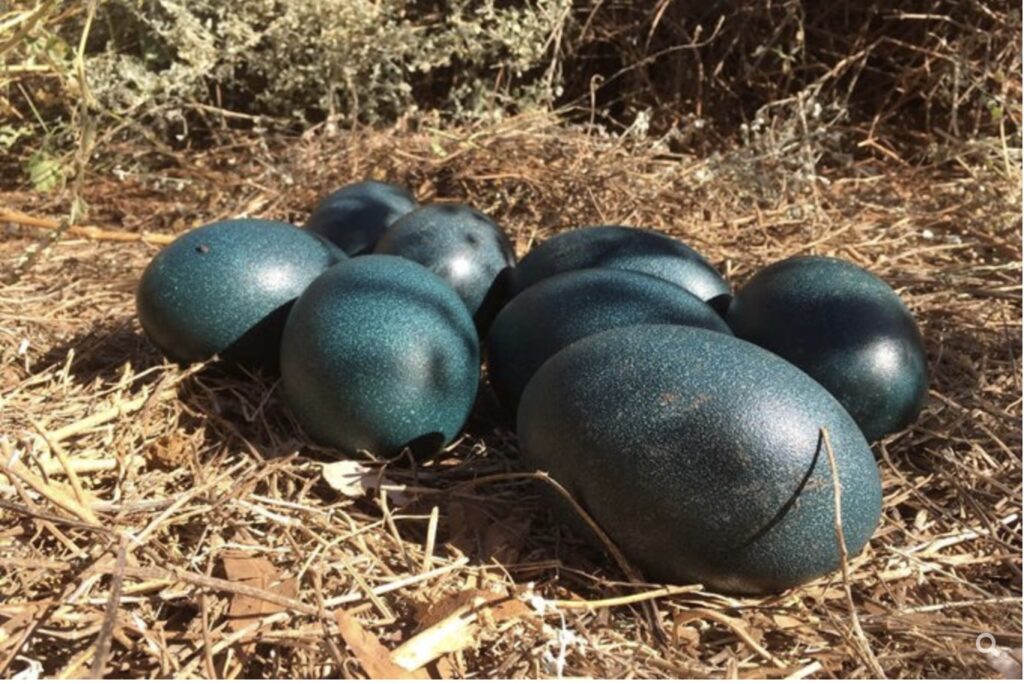
Emus are omnivores, meaning they eat various things, including fruits, seeds, flowers, insects, snails, small animals, and droppings. They can go for weeks without eating and walk up to 25 kilometres daily, making them important seed dispersers. They leave and scatter seeds from their faeces behind them, allowing them to grow in fertile soil. This practice helped spread prickly pear throughout Queensland in the early 20th century.
As well as being an important food source, the fat of emus was used for oil, their bones for knives, tendons for strings and feathers for ceremonial occasions.
The emu is a prominent part of Aboriginal storytelling and culture, inspiring their dances and stories. However, the word emu derives from an Arabic word used by Portuguese explorers for a large bird.
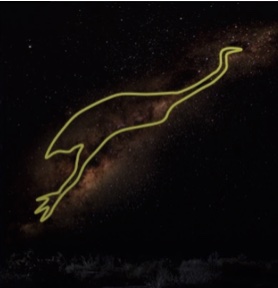
The emu has also significantly featured in astrological mythology. Aborigines used the stars to navigate and always looked to the night sky. According to their legend, emus were creator spirits that used to fly over the land. If you look south to the Southern Cross, the dark patches of stardust in front of the Milky Way show the Emu Constellation – the shape of a great emu stretching across the sky.
(Left) The Emu Constellation.
According to Aborigines, they know it will be a cooler, wetter summer if the emus lay their eggs continuously throughout the summer months. Emus typically only breed once a year, but in a La Nina year, they produce twice in a single year.
One of the more remarkable stories about emus is the war Australia once fought against them during the 1932 emu migration. A drought caused a rampage from the pastoral regions to the more settled farming areas drawn to the crops and pastures, damaging infrastructure on farms of many war veterans, including the rabbit-proof fence. Farmers sought the help of the army. Major Meredith of the Royal Australian Artillery led a party armed with Lewis machine guns and 10,000 rounds to try and stop the estimated 20,000 emus. Incredibly, they lost the war to the defenceless and flightless birds who were too tough and fast to destroy!
The problem was that so much food was available for the emus that they were gathered in small groups. The first attempt by Meredith’s men was to use beaters to herd the small groups into firing range. At about one kilometre, the first burst of fire landed short, with the second burst killing only a small number as the emus raced for the cover of the nearby trees. The army decided to change tactics and resorted to ambush. Guns were set up at a dam, and close to sunset, a hundred emus approached the dam within 100 metres. The gunners opened fire only to see the emus scatter and disperse. The next day a flock of about 1,000 emus headed for the water in the dam. Again, the emus scattered after the machine guns opened fire, aided by the jamming of one of the guns. The army and farmers were amazed at the emus’ ability to sustain injury and keep running. Major Meredith said, “if we had a military division with the bullet-carrying capacity of these birds, it would face any army in the world. They could face machine guns with the invulnerability of tanks. They are like Zulus…”
Less than a week later, the defence minister ordered an embarrassing withdrawal of the troops after their unsuccessful mission. In addition, Prime Minister, Joe Lyons, told Parliament the Defence Department would not pay the bill for hunting emus with machine guns. This prompted a question from the floor, “Is a medal to be struck for this war”?
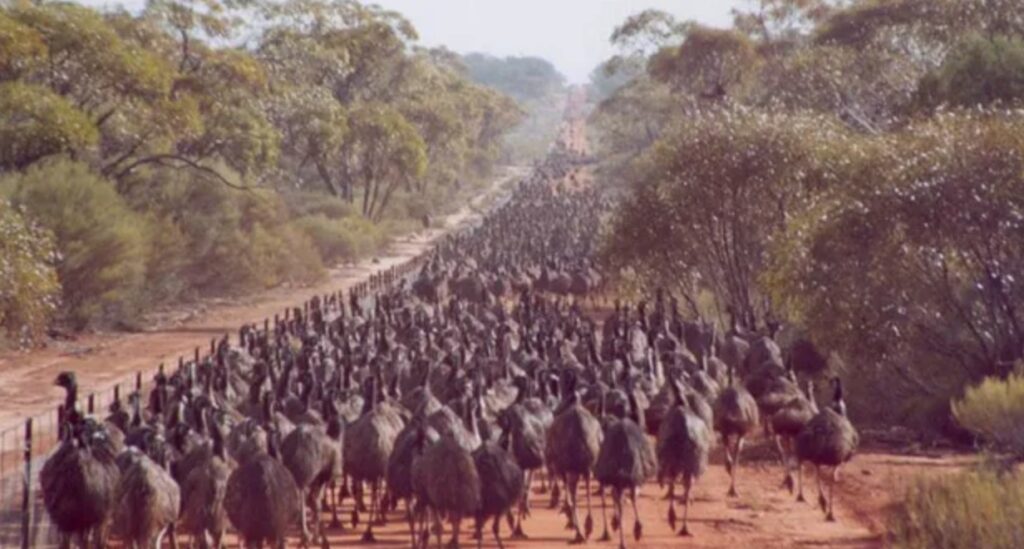
The emus returned in 1934, and again the locals asked for assistance. The government wisely decided against sending in the army and instead set up a bounty system, with hunters paying for every emu they killed. It proved successful and was again subsequently in the 1940s when the emus returned once again.
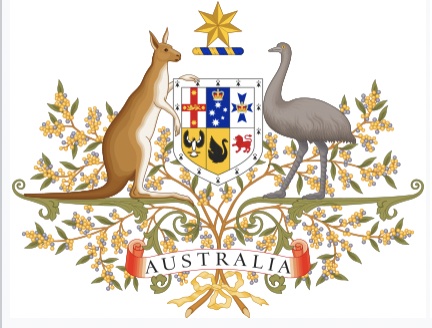
Despite their uniqueness, emus proudly occupy a place in our culture. They appear on our Coat of Arms with the kangaroo and feature on the 50-cent coin. Up to 600 gazetted sites in Australia have emu in their names, ranging from mountains and hills to lakes and creeks. Some of our traditional beers proudly use the emu’s name through Emu Bitter and Emu Export, and the Royal Ornithologists Union also calls its official publication Emu.
(Left) The Coat of Arms
Emu meat is highly proteinous and low in fat, making it a healthy alternative to beef, probably because emu meat is red, unlike the meat of many other birds that are typically white.
Finally, emus are one of a few bird species with claws on their wings, sharing that trait with ostriches, ducks and swans.
I am sure many other interesting facts and uses of the emu signify our cultural link to this flightless and iconic Australian bird. Do you have any to share?
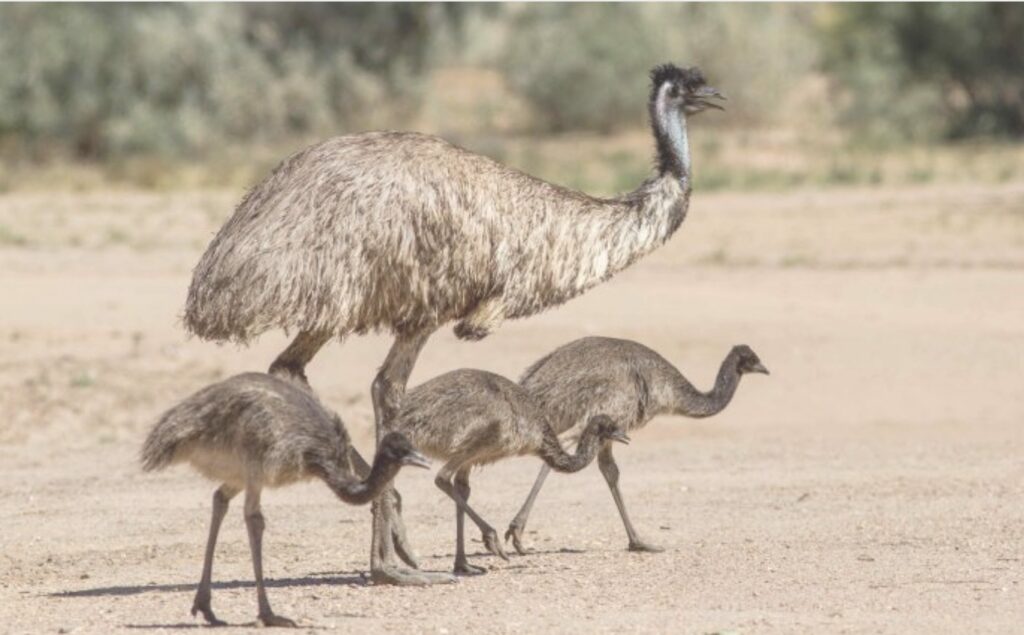
Thanks Robert.
A few years ago an emu took up residence on our property at Gwambygine, but I had to banish it to the neighbour’s place because it would attack any woman that it encountered, including my wife and grand-daughters.
This emu, a solitary male, would have a false pregnancy once a year. It would lie down under a tree and sit motionless, a little heap of feathers, without food or drink, for about two months, as if it was incubating eggs. We would go and look at it periodically, and I frequently thought it had died. But then one day we would see it striding around as if nothing had happened, bright-eyed and aggressive.
As for being omnivorous, he once reached across the fence and snatched a doughnut from the grasp of one of my grand-daughters, and consumed it at a gulp.
Robert
Your quill flows informatively on a myriad of topics.
This unique animal has now been ported into a fairy tale, vis. the Black Emu by a recent Professorial appointment to Melbourne University.
As it was with Hans Christen Anderson in my school days, the fairy tale has risen again for neigh compulsory use in our schools and woke studies in universities.
The emus at Tidbinbilla Nature Reserve in the early 1970s were very domesticated. Upon arrival for a barbeque, every car in our forestry group had at least one emu staring through the windows looking for something edible.
Despite multiple lookouts to stop theft off the BBQ, one cook was still outsmarted. As he swatted one emu on the tail feathers to move it on, another, standing behind him reached around on his blind side and scored a hot sausage off the hotplate.
https://genius.com/John-williamson-old-man-emu-lyrics
Fascinating story. I bet there are a few other funny tales to tell about these birds.